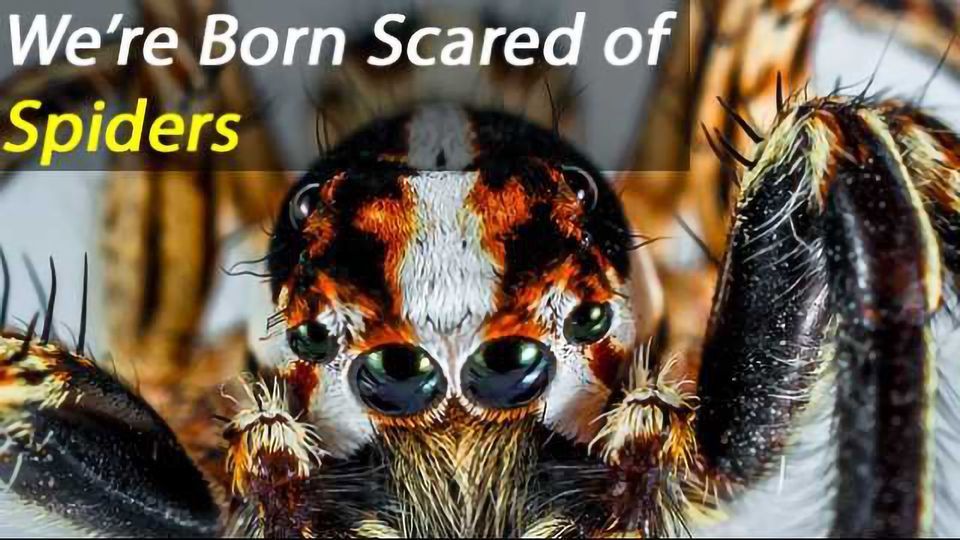Innate Fear of Snakes and Spiders: a Survival Instinct Found in Babies

Complete the form below to unlock access to ALL audio articles.
Snakes and spiders evoke fear and disgust in many people. Even in developed countries lots of people are frightened of these animals although hardly anybody comes into contact with them. Until now, there has been debate about whether this aversion is innate or learned. Scientists at the Max Planck Institute for Human Cognitive and Brain Sciences (MPI CBS) in Leipzig and the Uppsala University have recently discovered that it is hereditary: Babies as young as six months old feel stressed when seeing these creatures—long before they could have learned this reaction.
Presumably, in Germany most people have never come across a poisonous spider or snake in the wild. Here in this country, there are no spiders that pose a threat to humans. Likewise, for snakes, there are just two species that are indeed poisonous but they are so rare that you hardly ever encounter them. Nevertheless, there are few people that would not shiver at the thought of a spider crawling up their arm, however harmless it may be.
This fear can even develop into anxiety which limits a person’s daily life. Such people are always on edge and cannot enter a room before it is declared “spider free” or cannot venture out into nature for sheer fear that they may encounter a snake. In developed countries one to five percent of the population are affected by a real phobia of these creatures.
Until now, it was not clear where this widespread aversion or anxiety stems from. While some scientists assume that we learn this fear from our surroundings when we are a child, others suppose that it is innate. The drawback of most previous studies on this topic was that they were conducted with adults or older children—making it hard to distinguish which behavior was learned and which was inborn. Such studies with children only tested whether they spot spiders and snakes faster than harmless animals or objects, not whether they show a direct physiological fear reaction.
Scientists at the Max Planck Institute for Human Cognitive and Brain Sciences (MPI CBS) in Leipzig and the Uppsala University, Sweden, recently made a crucial observation: Even in infants, a stress reaction is evoked when they see a spider or a snake. And this already at the age of six months, when they are still very immobile and have had little opportunity to learn that these animals can be dangerous.
 When the babies saw a snake or a spider (second row) instead of a flower or a fish (first row) of the same size and colour, their pupils enlarged significantly (red versus green curve). This is a distinct signal that they felt stressed looking at these animals. © MPI CBS
When the babies saw a snake or a spider (second row) instead of a flower or a fish (first row) of the same size and colour, their pupils enlarged significantly (red versus green curve). This is a distinct signal that they felt stressed looking at these animals. © MPI CBS
"When we showed pictures of a snake or a spider to the babies instead of a flower or a fish of the same size and color, they reacted with significantly bigger pupils", says Stefanie Hoehl, lead investigator of the underlying study and neuroscientist at MPI CBS and the University of Vienna. "In constant light conditions, this change in size of the pupils is an important signal for the activation of the noradrenergic system in the brain, which is responsible for stress reactions. Accordingly, even the youngest babies seem to be stressed by these groups of animals."
"We conclude that fear of snakes and spiders is of evolutionary origin. Similar to primates, mechanisms in our brains enable us to identify objects as 'spider’ or 'snake’ and to react to them very fast. This obviously inherited stress reaction in turn predisposes us to learn these animals as dangerous or disgusting. When this accompanies further factors it can develop into a real fear or even phobia. "A strong panicky aversion exhibited by the parents or a genetic predisposition for a hyperactive amygdala, which is important for estimating hazards, can mean that increased attention towards these creatures becomes an anxiety disorder."
Interestingly, it is known from other studies that babies do not associate pictures of rhinos, bears or other theoretically dangerous animals with fear. "We assume that the reason for this particular reaction upon seeing spiders and snakes is due to the coexistence of these potentially dangerous animals with humans and their ancestors for more than 40 to 60 million years—and therefore much longer than with today’s dangerous mammals. The reaction which is induced by animal groups feared from birth could have been embedded in the brain for an evolutionarily long time.
For modern risks such as knives, syringes or sockets, presumably the same is true. From an evolutionary perspective, they have only existed for a short time, and there has been no time to establish reaction mechanisms in the brain from birth. "Parents know just how difficult it is to teach their children about everyday risks such as not poking their fingers into a socket", Hoehl adds with a smile.
This article has been republished from materials provided by Max Planck Institute for Human Cognitive and Brain Sciences. Note: material may have been edited for length and content. For further information, please contact the cited source.

